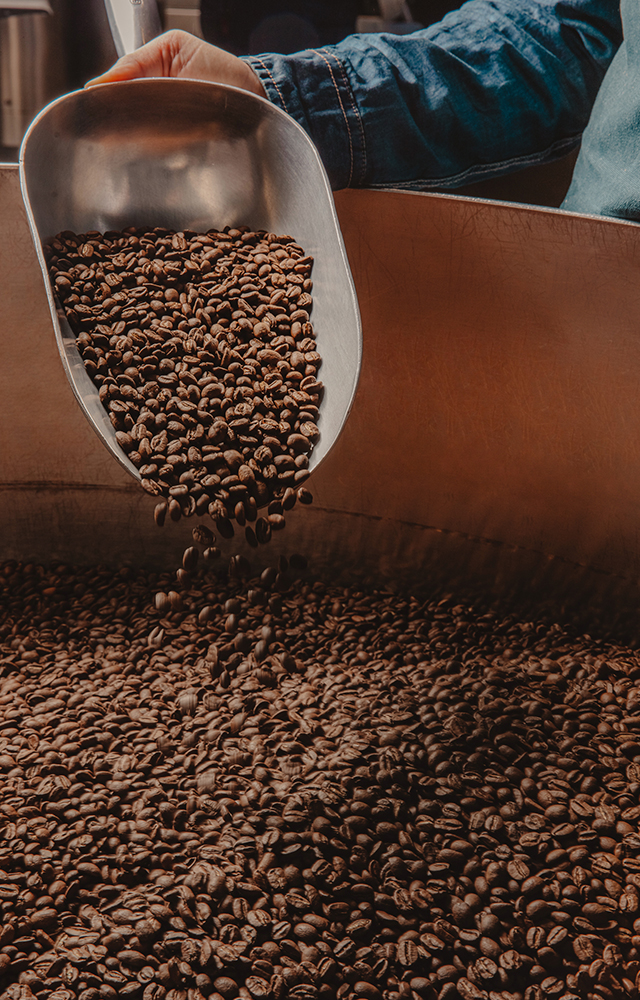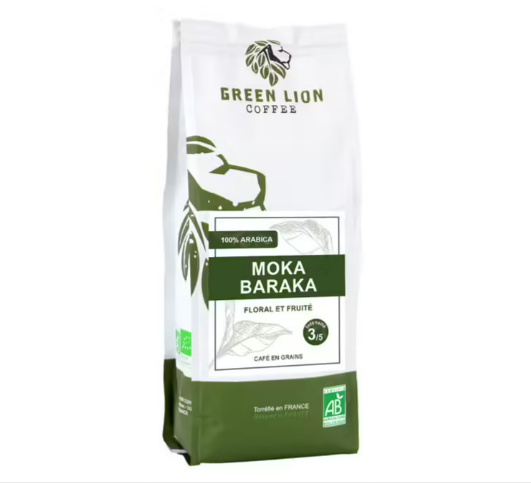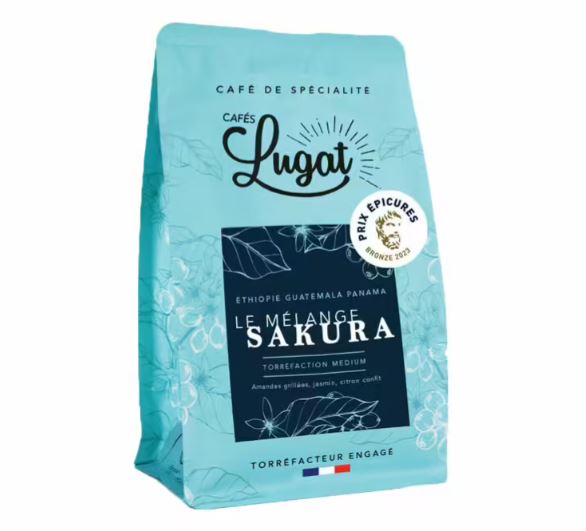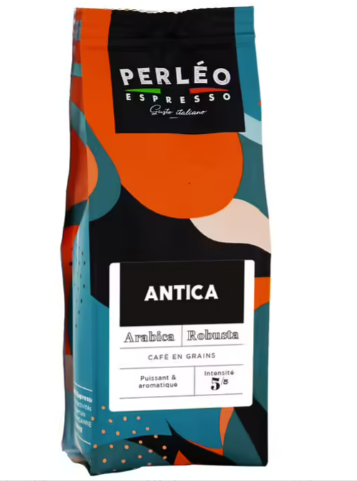
- Home
- Coffee Blend: the Art of Mixing and Roasting Different Coffee Beans ?

Coffee Blend: the Art of Mixing and Roasting Different Coffee Beans ?
Written by Alice
Reading time 6 minWhilst picking your coffee in-store or online, you may have come across the terms “Single-Origin Beans from Columbia” or “ Brazil, Nicaragua and Rwanda Blend”. As their names suggest, single-origin entails that the beans all come from the same geographic region, whereas blend means the coffee beans come from multiple origins. But what is the point of blending coffee? How does it impact taste? Single-origin vs Coffee blend: which should you choose? Well, those are exactly the questions we are about to answer.
What Is A Coffee Blend?
Blending involves meticulously combining different coffee beans from various origins and varietals. This allows roasters to create unique flavour profiles, catering to diverse preferences and achieving a consistent taste experience. The secret to a great coffee blend starts long before the roasting begins. It all lies in the meticulous sourcing of green coffee beans, the foundation upon which a harmonious and flavourful cup is built.
Selecting The Beans For The Blend
Skilled roasters set out to find beans from various origins and varietals. Each origin boasts unique characteristics – beans from Brazil might offer a smooth and nutty base, while Ethiopian Yirgacheffe beans could contribute vibrant citrusy notes. The roaster considers factors like flavour profile, acidity, and body during this selection process. Imagine a skilled painter carefully choosing pigments for a masterpiece; the roaster plays a similar role, selecting beans that complement each other perfectly.
Creating the Blend
Once the ideal set of coffee beans is assembled, it’s time for the blending process itself. This can involve meticulous calculations and precise measurements to ensure the perfect proportions of each bean. This is very much an experimentation phase. The roaster may taste individual beans and experiment with different combinations and percentages. The goal is to make a final product with a balanced and well-rounded flavour.
The Importance of Roasting
While the blending process sets the stage, the roasting technique plays a crucial role in unlocking the full potential of the beans. Here, two schools of thought exist:
- Pre-blending: Some roasters blend the green coffee beans before roasting them together. This approach ensures even roasting for all beans.
- Post-blending: Alternatively, roasters may roast coffee bean varieties separately, allowing for more precise control over the roasting profile of each bean. They can then blend the roasted beans to achieve the desired final flavour profile.
No matter the approach, skilled roasting is essential for drawing out the best qualities of each bean and ensuring a cohesive taste experience in the final blend.
The Advantages Of Coffee Blends
Consistent Flavour Profile
Unlike single-origin coffee beans, which can vary slightly year-to-year due to weather and harvest conditions, blends offer greater consistency. By combining beans from different origins with similar flavour profiles, roasters can create blends that deliver a reliable and enjoyable cup, time and time again. This consistency is particularly valued by coffee shops and cafes that want to ensure their customers receive the same great taste every visit.
Complexity and Harmony
By combining coffees with different flavour profiles, body characteristics, and acidity levels, roasters can craft blends that are more complex and well-rounded than single-origin offerings. Imagine combining the smooth, chocolatey notes of a Brazilian bean with the bright, citrusy notes of an Ethiopian Yirgacheffe. The resulting blend can offer a delightful interplay of flavours, creating a more captivating and engaging coffee experience.
Catering to Diverse Preferences
The beauty of blending lies in its versatility. Roasters can tailor blends to cater to a wide range of taste preferences. Are you looking for a robust and chocolaty cup of coffee? A mix with more Latin American beans can satisfy your desire. Perhaps you prefer a brighter and more acidic cup? A blend featuring East African origins with citrusy notes can be your perfect match. This ability to cater to diverse preferences allows coffee drinkers to find blends that perfectly align with their individual taste profiles.
Accessibility and Affordability
While some single-origin coffees, particularly those from rare or high-altitude origins, can be quite expensive, blends often offer a more accessible and affordable option. By combining various beans, roasters can create high-quality blends without relying solely on premium, high-cost single-origin coffees. This makes specialty coffee beans more accessible to a wider range of coffee drinkers, allowing them to explore complex flavours without breaking the bank.
Coffee Blends vs. Single-Origin
While single-origin coffees offer a chance to explore the distinct characteristics of a specific region, blends provide a platform for complexity and delightful harmony in your cup. Both blends and single-origin coffees have their dedicated fans.
Single-origin coffees celebrate the unique characteristics of a specific region or farm. These coffees allow you to appreciate the subtle nuances influenced by factors like terroir (growing conditions) and processing methods. For coffee enthusiasts who enjoy a “single-estate” experience and the chance to explore the distinct flavours of different growing regions, single-origin coffees are a perfect choice.
Blends, on the other hand, offer a platform for complexity and harmony. By masterfully combining beans from various origins, roasters create a symphony of flavours, catering to a wider range of taste preferences. This allows you to experience a delightful interplay of acidity, body, and flavour notes in a single cup. If you enjoy a consistent and well-rounded coffee experience with the potential for surprising flavour combinations, blends might be your ideal match.
Choosing Your Perfect Cup
Your Taste Profile
Do you tend to prefer a familiar and consistent taste, or are you adventurous and enjoy exploring unique flavour profiles? Blends offer a reliable experience with potential for complexity, while single-origin coffees can introduce you to the unique characteristics of different regions.
Brewing Method
Certain brewing methods may be better suited to specific types of coffee beans. For example, pour-over brewing techniques can highlight the delicate nuances of single-origin coffees, while French press brewing might be better suited for a full-bodied blend.
Desired Coffee Experience
Are you looking for a familiar and comforting cup, or do you crave a coffee that surprises your taste buds? Blends offer a consistent and reliable experience with the potential for complexity, while single-origin coffees can provide a more unique and adventurous taste experience.
Top Tip
Not all blends are created equal. Some large retailers might use blends to mask inconsistencies in bean quality. However, many specialty coffee roasters, are transparent about the origins and varietals used in their blends. This allows you to make informed choices based on your preferences and support ethical sourcing practices.

Shopping list
If you’d like to sample some of our coffee blends, we have put together a little selection for you
Coffee is a tapestry woven from diverse flavours and origins. Blending offers a unique thread in this tapestry, allowing roasters to create a harmonious balance of tastes and cater to a wide range of coffee lovers. From the consistent, well-rounded experience to the delightful interplay of flavours, blends offer a compelling choice for many.
However, the beauty lies in exploration. Don’t be afraid to venture beyond blends and explore some single-origin coffees. Appreciate the distinct characteristics of a specific region or farm, and discover the subtle nuances influenced by terroir and processing methods.
Ultimately, whether it’s a harmonious blend or a unique single-origin experience, your perfect cup is out there!
Discover all of our articles






